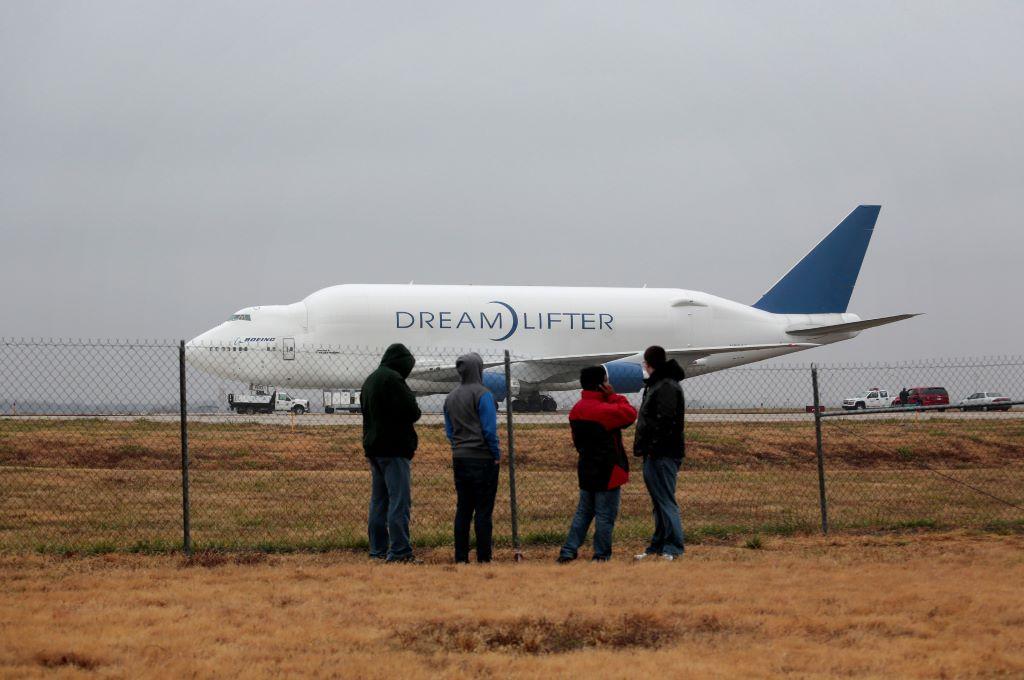
It might sound crazy, but every now and then professional pilots with plenty of experience find themselves landing at the wrong airport. Take the following cases as a couple of examples that occurred only within two months of each other:
On November 21, 2013, a Boeing 747-400LCF Dreamlifter mistakenly landed at Colonel James Jabara Airport, a small general aviation airfield in northeast Wichita instead of McConnell Air Force Base, nine miles to the south.
The flight crew was operating in night visual meteorological conditions (VMC) when during their approach the flight crew saw runway lights, which were misidentified. The crew was cleared for an RNAV approach into McConnell Air Force Base and completed the flight by visual reference to the Jabara runway. It was only once on the ground that the McConnell Air Force Base tower confirmed they were in the wrong place. For a time, the crew thought they had landed at Wichita Beech Field, also nearby. The Jabara runway was 6,101 ft long, whereas McConnell runways are 12,000 ft long: quite a threshold, especially for an aircraft of this enormous size.
On January 12, 2014, a Southwest Airlines B737 mistakenly landed at M. Graham Clark Downtown Airport in Branson, Missouri (PLK) as opposed to Branson Airport (BKG). The flight crew reported they were flying direct to a fix for an RNAV approach, also in night VMC, when they advised ATC they had the airport in sight. Upon being cleared for the visual approach, the flight crew flew to the airport they saw out the windshield instead of the airport depicted on their cockpit displays. The aircraft ultimately stopped at the end of a 3,738-ft runway after the brakes were heavily applied.
Between these two incidents, there were some common themes. Both flights occurred in night VMC on RNAV approaches where visual landings could be made. Perhaps with this information in mind, fellow aviators can acknowledge that these were honest mistakes in both cases.
Though we all make mistakes, making them in an airplane is one of the last places we want them to occur. Thankfully in both incidents, there were no injuries, however those short runways could have made the outcomes far more severe. As with almost everything else in aviation, there’s a checklist for this, and hopefully it helps save you from a dangerous situation, or at the very least, embarrassment.
Verify With Cockpit Instrumentation.
There is a reason everything in aviation is so redundant, so all information can be verified by more than one source. In both cases above, the source used for deciding to land was the pilots’ eyes. Cockpit instrumentation was not utilized enough to verify that they were landing at the correct airport. It also is important to adhere to standard operating procedures (SOPs) and verify the airplane’s position relative to the destination airport.
Night Vigilance
Flying at night has its own set of rules compared to flying during the day, and for good reason. It’s important to maintain extra vigilance when identifying the destination airport at night, especially in an area with other airports in close proximity. In the case of the Boeing Dreamlifter, three airports, including Jabara, Beech Field and McConnell Air Force Base, lie within close proximity and are oriented similarly.
Include The Airport’s Layout In The Approach Briefing
The destination airport’s layout and relationship to other ground features, along with available lighting such as approach light systems, visual glideslope indicators and runway lighting should be included in your approach briefing to further verify you’re flying to the right place.
While landing at the incorrect airport occurs, following these procedures will help avoid mistakes.






Comments